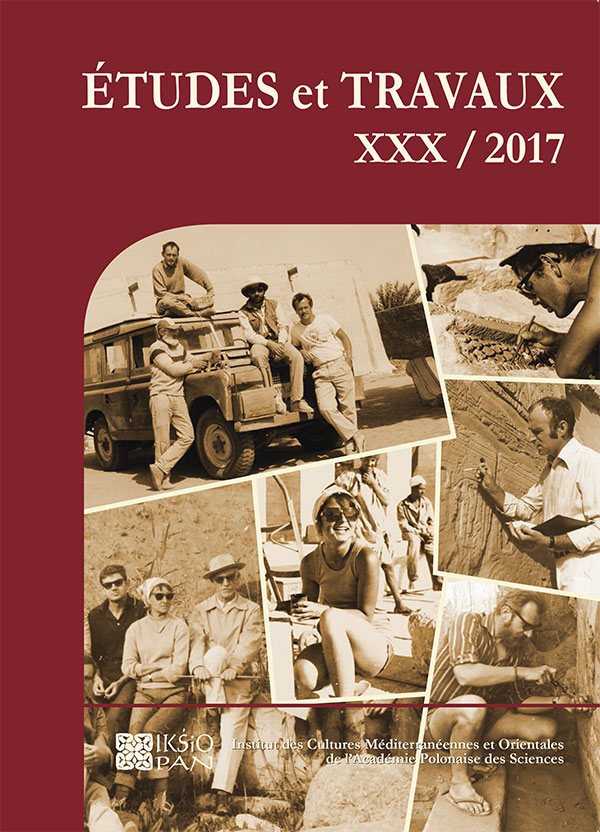Petrographic Variability of the Fabrics of Wine Jars from Sha‘ar-Ha Ἁmakim as a Reflection of Differences in Their Provenance and Chronology
DOI:
https://doi.org/10.12775/EtudTrav.30.017Słowa kluczowe
Sha‘ar-Ha Ἁmakim, wine jars, Persian period, Hellenistic period, Roman period, jars petrographyAbstrakt
The aim of the present study is to investigate the relationship between the shape of the Levantine wine jars discovered at Sha‘ar-Ha Ἁmakim and the petrography of their respective fabrics. The majority of sampled ceramic material originates in well-defined chronological phases of the settlement at the site, spanning the Persian through to the Middle Roman periods. The obtained results clearly demonstrate a connection between the historical period and the raw materials used in jar production. Specifically, the jars of the Phoenician type used in the Persian and Hellenistic periods were made from a fairly homogeneous raw material, the features of which such as the content of the fragments
of the coralline alga Amphiroa confirm the previous results of the investigations of jars whose fabric has been considered as Phoenician. On the other hand the bag-shaped jars, especially those of the Hellenistic period, are characterized by the more diversified petrography of their fabrics, suggesting that they were produced by a number of local workshops to supply the needs of local wineries. Finally, the Roman period brings an abrupt change in the production of wine containers, with the introduction of the common use of the fine ferruginous soil rich in quartz silt.
Pobrania
Opublikowane
Jak cytować
Numer
Dział
Statystyki
Liczba wyświetleń i pobrań: 423
Liczba cytowań: 1



